In the trenches with New Jersey’s heroic food producers.
By Andy Clurfeld
Morning has broken, and I’m rough-chopping Terhune’s Winesaps, an apple that’s a little more tart than sweet, and tossing the cubes into a small stovetop pot moistened by melted Valley Shepherd butter. I add a couple of cups of Morganics oats, a dash of cinnamon, and stir, coating the oats and apples with the spice and butter. A minute later, I add water to cover, pump up the heat till the liquid bubbles, then turn down the flame and cook my oatmeal, stirring now and again, for a handful of minutes until the oats and apples are soft. Should I add a splash of maple syrup from Sweet Sourland Farms? Honey? Why not a tad bit of both? I lower the heat under my pot of oatmeal to the barest of simmers and grab myself a bowl and a spoon.
The skies are cloudy and the air outside damp, but my morning is about to take a turn for pure bright: Morganics Family Farm oatmeal is the ideal breakfast, the jump-starter of any day at all, be it crammed and tense or lazy with time for dreaming. Scott and Alison Morgan’s farm in Hillsborough is where the couple oversee operations that result in the freshest possible grains—grains grown in sustainable, eco-responsible fashion. When you eat fresh, sun-dried grains, “your body will reap the benefits,” the Morgans say I agree. My breakfast of oatmeal made with Morganics oats, Valley Shepherd butter from the creamery in Long Valley, apples from Terhune Farms in Mercer County, honey from Top of the Mountain in Wantage, and maple syrup from Sweet Sourland in Hopewell, revs up my mind, body and heart. I am inspired, fueled and gratified to be eating an all-star New Jersey meal.
It’s what I most love to do. Once upon a not-so-long-time-ago, it was much harder to do. But today there are myriad and many farmers and food artisans who are the Garden State’s true unsung heroes, people who are plying the various soils and waters of a peninsula packed with some 8.9 million people and offering an array of foods that have not traveled thousands of miles over the course of weeks before transfer to supermarket shelves. These heroes increasingly farm and produce fresh foods year-round, employing new techniques and technologies to serve forth a bounty with an impeccable pedigree: New Jersey, the Garden State. Jersey-born, Jersey-bred, Jersey-proud.
River Bend Farm/Gladstone Valley Pasture Poultry • Far Hills
Dakota and Duke are loving life. They’re doing their job, these 4-year-old guardians of livestock bred in the Italian Alps and best known by their breed name, Maremma. Huge, hairy and armed with a ferocious bark, the dogs seem to be everywhere they need to be in order to protect Corné Vogelaar’s chickens from harm that may come by air or land. “Right now, they’re guarding the layers,” Corné says. “They guard against the aerial predators and they guard against the fox and the coyotes. It’s all instinct. They are not vicious; their weapon is their alertness and their bark.”
 They work where the girls are, the egg-layers, the turkeys, the broilers—those Cornish crosses that are the pasture-raised chickens sold under the Gladstone Valley Pasture Poultry label. A sibling enterprise to River Bend Farm, headquartered in Far Hills, Gladstone Valley chickens are the American equivalent to the Bresse chicken in France, the anointed “queen of poultry, poultry of kings.”
They work where the girls are, the egg-layers, the turkeys, the broilers—those Cornish crosses that are the pasture-raised chickens sold under the Gladstone Valley Pasture Poultry label. A sibling enterprise to River Bend Farm, headquartered in Far Hills, Gladstone Valley chickens are the American equivalent to the Bresse chicken in France, the anointed “queen of poultry, poultry of kings.”
“They’re out on grass and rotated on fresh grass daily,” Corné says, describing the efficiency of the “chicken tractor,” which pulls the chickens’ homey coop to new servings of the good stuff. Dakota and Duke appear to smile as Corné gives them each a good rubbing behind the ears. Then it’s Corné’s turn to smile. He’s been loving life at River Bend Farm since 1996, shortly after he graduated Rutgers with a degree in animal science. Born and raised in Holland, he came with his family to the United States in 1988. Farming was his goal. He spent his first 10 years at River Bend, then all-cattle and all-Angus, improving the species.
“I really love the genetics and the breeding of better cattle,” Corné notes. Slowly, he “started harvesting beef and marketing it. The meat business is now our main business, and we also supply breeding stock to other farmers.” In more recent years, he’s added Berkshire pigs (“the Angus of pork”) and a few Mangalistas as well to his stock. There’s lamb and there are the chickens and there are eggs.
Corné sells to an A-List of restaurants, including the Ryland Inn, Pluckemin Inn and the Harvest Group eateries. “We are fortunate to work with excellent chefs who know how to work nose-to-tail and use everything,” he says. But home cooks also are in the River Bend/Gladstone mix: Along with a self-service egg cart, Corné keeps an on-farm store open for retail sales of frozen beef, chicken, pork and lamb on Friday afternoons and Saturday mornings. He sells at the in-season Bedminster Farmers’ Market.
As manager of the privately owned farm, Corné tends to the needs of a sizable span of animals. But he doesn’t do it alone. There are a couple additional full-time employees; his two oldest sons also work on day-to-day operations. Corné and his wife, Dawn, have eight children, six boys and two girls ranging in age from a baby born this past January to a 21-year-old whose welding skills are useful on the farm. Corné invites me into one of the cattle pastures. “Come meet Clover,” he says. “She’s more of a pet.” He maneuvers the sweet bovine in my direction and nods when I pet her. I’m loving life, too.
Hillcrest Orchard & Dairy/ Jersey Girl Cheese • Branchville
Sal Pisani is scooping ricotta into baskets set atop trays, allowing the fresh, warm cheese to drain, and talking in Italian to Raffaelle “Ralph” Saporito, who is both balling up and braiding batches of mozzarella. Sal and Ralph talk cheese in Italian almost every day, a language that bridges the near-35-year difference in their ages. Ralph was born in Raritan; at age 3, his family returned to Naples, Italy. A revered cheesemaker in Italy, he returned to the United States to teach Sal the art and craft of making classic Italian cheeses. “I’m an apprentice,” says Sal, 27, “and Ralph is my teacher.”
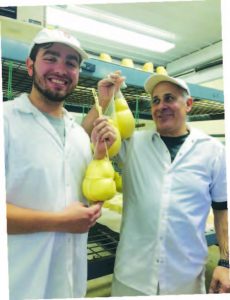 Professor in a doctoral program is more like it. Sal Pisani grew up under the tutelage of his father Rocco, who was born and reared in Calabria, Italy, but moved to the U.S. at 21, settling in Morris County. There, on threeacres, the Pisani family created their own Little Italy. “My father brought with him the traditions he picked up from his mother,” Sal says. “Dad would make cheese, cure meats. Every September, we’d make tomato sauce. It was all about food, when I was growing up, homesteading, not selling what we made.” There was a vegetable garden, animals – “chickens, goats, a horse, sheep, a peacock and an alpaca, but never more than 15 animals”—and the constant rhythm of time at the table with family and friends.
Professor in a doctoral program is more like it. Sal Pisani grew up under the tutelage of his father Rocco, who was born and reared in Calabria, Italy, but moved to the U.S. at 21, settling in Morris County. There, on threeacres, the Pisani family created their own Little Italy. “My father brought with him the traditions he picked up from his mother,” Sal says. “Dad would make cheese, cure meats. Every September, we’d make tomato sauce. It was all about food, when I was growing up, homesteading, not selling what we made.” There was a vegetable garden, animals – “chickens, goats, a horse, sheep, a peacock and an alpaca, but never more than 15 animals”—and the constant rhythm of time at the table with family and friends.
Sal graduated Monmouth University in 2014 and returned home. Cheesemaking was his passion; it drew him in as a career when he learned of a buffalo farm in need of someone to make the herd’s milk into cheese. After that ended, Sal found a new home at Hillcrest, an apple orchard and dairy in Branchville, Sussex County, owned and operated by farmer Jimmy Cuneo. His prize Jersey cows, which yield creamy, high-fat, high-protein, high-quality milk ideal for making Sal’s favorite cheeses, were waiting for the right partner. “Dairyfarms are closing every day, it seems,” Sal says. To keep going, “Jimmy had decided to outfit and expand to accommodate cheesemaking and retail. We made the jump with him. Ralph decided to come and work with us. It was the best luck to find this opportunity.”
The best luck for consumers, too. Sal’s Jersey Girl cheese line currently includes fresh mozzarella, fresh ricotta, scamorza (a dry, aged mozzarella), primo sale (a fresh basket cheese), cacciocavalo (a sharp-tasting aged cheese) and burrata, and is sold at farmers’ markets in Sparta, Morristown and Holmdel, as well as Saturdays and Sundays from 10 a.m. to 4 p.m. at the farm’s own store in Branchville.
Back in the cheesemaking room, Ralph Saporito finishes braiding mozzarella and his protege scoops a spoonful of the still-warm ricotta from a basket. Clouds to heaven—that’s what pops into my mind as I taste. Sal smiles. I sample the mozzarella, the scamorza, the cacciocavalo and know I have never, ever tasted better examples of these beloved cheeses. Italy is no longer an ocean away.
Rolling Hills Farm • Delaware Township
Opening bells at New Jersey’s farmers’ markets don’t always ring in the kind of bounty stalwart shoppers crave. May and June aren’t July, August and September, after all. Not so if you come upon the stalls of Rolling Hills Farm. Fresh from the farm in Delaware Township, Hunterdon County, May and June see bushels and baskets of cucumbers, beets, new potatoes, summer squash, snap peas, salad mixes, arugula, carrots, head lettuces, scallions, Swiss chard, broccoli, cauliflower…okay, time to catch your breath. You might lose it again when you see, up close and in person, the heart-of-spring produce grown by Stephanie Spock and John Squicciarino on a scant 1½ acres.
“Thanks to reading the works of Eliot Coleman,” John says, referring to the New Jersey-born revolutionary farmer whose Four Season Farm on Cape Rosier, Maine, does exactly what its name promises, “we farm year-round [using] high tunnels that let us have produce in May.”
 “Our customers go insane over our carrots—they’re the sweetest carrots!” adds Stephanie. They grow in theground, in high tunnels, or hoop houses—plastic-covered structures that allow a plant’s roots to take in the nutrients of good soil, all the while being protected from storms and other excesses of the elements. Not that the couple wish to defy seasonality.
“Our customers go insane over our carrots—they’re the sweetest carrots!” adds Stephanie. They grow in theground, in high tunnels, or hoop houses—plastic-covered structures that allow a plant’s roots to take in the nutrients of good soil, all the while being protected from storms and other excesses of the elements. Not that the couple wish to defy seasonality.
“No tomatoes in May,” both say, as John adds: “We recognize the seasons.”
On land leased from members of the Hamill family, of Cherry Grove Farm in Lawrence Township, Stephanie and John grow produce following organic practices and sell at the summertime Asbury Fresh Market as well as at farmers’ markets in Wrightstown and Yardley, PA. Their attraction to farming began while they worked on Brick Farm Tavern’s Double Brook Farm in Hopewell, which has become something of a breeding ground for young farmers as well as chefs learning the lessons of the seasons.
“We were 26 when we started here, in 2014,” John says. “It was stressful in the beginning,” Stephanie adds.
But they were determined. In the depths of winter, Oliver Gubenko’s Harvest Drop, which delivers produce and products from area farms to restaurants and small retail outlets, brings Rolling Hills’ fresh greens for salads and more to chefs. “It’s more work for us, but it’s worth it,” says John. The couple’s year-round, smart-farming practices evens out the workload. Rather than getting burned out by summertime work weeks of 80 to 90 hours, they put in 20 to 25 hours a week in the typically fallow cold-weather months by growing those greens and gearing up for the earlier start that results in bumper crops in May. Summer, as a result, makes for more manageable 50-hour work weeks.
“We do things in winter to make for a bounty in May and June,” John says. Meanwhile, Stephanie is studying nutrition with the goal of having a practice that engages the farm. “It all ties in,” Stephanie says. “What we grow, how we eat, how we feel.”
Chickadee Creek Farm • Pennington
Jess Niederer is standing in a propagation greenhouse on Chickadee Creek Farm, her 25-acre year-round farm in Pennington. Jess looks up, smiles and says, “I got married here, right here, on the Winter Solstice, Dec. 21, 2018.” At 76 feet by 30 feet and cloaked in light, it’s not only a lovely place for a wedding but, in Jess’s words, “the proper size for the planned growth on our farm.”
Jess’s new husband is Kevin Riley, a nurse who works at a federal clinic in Trenton; Kevin’s new wife is a veritable rock star farmer, New Jersey’s answer to Eliot Coleman of Four Season Farm in Maine, and a presence at farmers’ markets both seasonal and year-round in towns all over the state: Princeton, Denville, WestWindsor, Morristown, Rutgers Garden, Hoboken, Summit, Metuchen. Full disclosure: I don’t know how to have dinner at home any more, be it a party or an any-old-night meal, without Chickadee Creek produce at hand. Wherever Jess Niederer sells, I’ll travel to buy. So I’m listening to Jess talk in a near-empty propagation greenhouse and longing to see where the harvested produce that I know is going to the next day’s market is kept. I’m going to buy some to photograph, up close and personal, for this story. And then eat.
Jess grew up in a farming family (fourth-generation, she is), went to Cornell, where she studied ecology and conservation biology, spent a couple of years working at nearby Honey Brook Farm, and is as conversant in the business of farming as she is about how to grow, harvest and market the 56 different crops she grows at Chickadee Creek.
 To work it all by the numbers: The Niederer family farm is about 80 acres, 40 of which are tillable and 25 of which—Chickadee Creek—Jess leases from her father. She employs nine people full-time, year-round, and is “trying to get every single one of them up to the $15-an-hour benchmark” well before state requirements kick in. Now in her 10th year running Chickadee Creek, she is 35 years old, has approximately 500 members in her CSA (Community Supported Agriculture) program. When we walk into one of her high tunnels, where gorgeous arugula is grown in the ground all winter, she’s quick to note a $14,000 tractor can work the soil of this 196-foot-by-30-foot structure. The number most on Jess Niederer’s mind, however, is $1 million—that’s the amount Jess needs to buy her farmland from her father. “It would be about $4 million if it wasn’t in the state preserved farmland program,” she says. That would not come with a house—just the land that Jess works to feed the thousands of people in New Jersey who love eating Chickadee produce.
To work it all by the numbers: The Niederer family farm is about 80 acres, 40 of which are tillable and 25 of which—Chickadee Creek—Jess leases from her father. She employs nine people full-time, year-round, and is “trying to get every single one of them up to the $15-an-hour benchmark” well before state requirements kick in. Now in her 10th year running Chickadee Creek, she is 35 years old, has approximately 500 members in her CSA (Community Supported Agriculture) program. When we walk into one of her high tunnels, where gorgeous arugula is grown in the ground all winter, she’s quick to note a $14,000 tractor can work the soil of this 196-foot-by-30-foot structure. The number most on Jess Niederer’s mind, however, is $1 million—that’s the amount Jess needs to buy her farmland from her father. “It would be about $4 million if it wasn’t in the state preserved farmland program,” she says. That would not come with a house—just the land that Jess works to feed the thousands of people in New Jersey who love eating Chickadee produce.
Jess’s business model is based on year-round production, which is good for customers and also good for her staff. If you stop growing, harvesting and selling in the cold months, Jess explains, you effectively lay off your staff. “You can’t keep good people that way,” Jess says. By doing regular net-profit analyses, she is able to determine what’s working (new crops, such as ginger and sweet corn), what needs to be “kicked off” (cauliflower just wasn’t selling), and what’s most profitable (salad greens, head lettuces, flowers, tomatoes, cut greens). She’s keen on farmers’ markets: “They’re time-intensive, but the dollar value is the best.” She doesn’t work with restaurants much. She’s devoted to her CSA members. She keeps the just-harvested produce in temperature-controlled containers until that produce is taken to market.
Ah-ha! On that day, I buy several head lettuces, creamy white Japanese turnips, carrots colored purple, yellow and orange. Two days later, I buy more Chickadee produce at the West Windsor Winter Market. Obsessed? Guilty as charged, and proud of it.
 Mishti Chocolates
Mishti Chocolates
What happens when chocolate meets ginger? Or lavender? Or toffee? How about sea salt, pineapple, chile or orange? What if you learn that these chocolate partnerships, as well as the straight-up chocolates, are vegan, organic, non-GMO, soy-free and gluten-free? When the chocolates are by Mishti, it’s about “bringing a smile to every face, one chocolate at a time.” Which is the slogan chocolatier Arpita Kohli wrote when she first started making the coveted chocolates. Because what’s not in Arpita’s chocolates just might be what makes them irresistibly delicious.
 The Scotch Plains resident started making chocolates professionally when she and husband Puneet Girdhar realized their then-baby daughter Mishti had a variety of allergies, including dairy. “We have a healthy household,” says Arpita, a skilled home cook who had been making chocolates since she was a child. “So I started making vegan chocolates.” And it worked. Little Mishti, now 4½, could enjoy chocolates like her mom and dad. Arpita, creative by nature with a career in textiles, kept experimenting and perfecting the chocolate line she named Mishti. She uses 100 percent chocolate; her milk chocolate is made with almond milk and her sourcing meticulous. Her elegant packaging reflects the fundamental simplicity of her recipes and products.
The Scotch Plains resident started making chocolates professionally when she and husband Puneet Girdhar realized their then-baby daughter Mishti had a variety of allergies, including dairy. “We have a healthy household,” says Arpita, a skilled home cook who had been making chocolates since she was a child. “So I started making vegan chocolates.” And it worked. Little Mishti, now 4½, could enjoy chocolates like her mom and dad. Arpita, creative by nature with a career in textiles, kept experimenting and perfecting the chocolate line she named Mishti. She uses 100 percent chocolate; her milk chocolate is made with almond milk and her sourcing meticulous. Her elegant packaging reflects the fundamental simplicity of her recipes and products.
“I don’t want to take all the credit; both my grandmother and mother and all my aunts are excellent cooks. I grew up around great food and wonderful flavors,” Arpita says.
Life’s been busy for the chocolatier. She started the business in 2017 and, in April 2018, gave birth to a second daughter, Seher. “Puneet is my true partner,” she says, praising his support and help in marketing. Indeed, Puneet, Mishti and now Seher are popular regulars at many farmers’ markets, including those in West Windsor, Ramsey and Red Bank, and the chocolates are sold in specialty markets such as Basil Bandwagon in Flemington and Clinton and Dean’s in Basking Ridge and Chester.
For Your Little Black Book
Morganics Family Farm
morganicsfamilyfarm.com
River Bend Farm
25 Branch Road, Far Hills • 908-234-1377
RBFAngus.com • GladstoneValley.com
Hillcrest Farm/Jersey Girl Cheese
2 Davis Road, Branchville • 973-703-5148
HillcrestFarmNJ.com
Rolling Hills Farm
133 Seabrook Road, Delaware Twp. • 609-731-9175
rollinghillsfarm.org
Chickadee Creek Farm
Titus Mill Road, Pennington
chickadeecreekfarm.com
Mishti Chocolates
206-569-5269
mishti-chocolates.com
 The future of healthcare is a topic of considerable debate in this country. Experts will argue endlessly the pros, cons and particulars of the various industry sectors, and consumer advocates will probably be battling with insurance companies until the end of time. Interestingly, there is one thing everyone seems to agree on: Integration of services is the key to any real progress. It was against this backdrop that Trinitas
The future of healthcare is a topic of considerable debate in this country. Experts will argue endlessly the pros, cons and particulars of the various industry sectors, and consumer advocates will probably be battling with insurance companies until the end of time. Interestingly, there is one thing everyone seems to agree on: Integration of services is the key to any real progress. It was against this backdrop that Trinitas  Regional Medical Center and St. Joseph’s Regional Medical Center in Paterson forged an Integrated Behavioral Health Network—one of the largest and most comprehensive in the region. The partnership was announced in late 2016.
Regional Medical Center and St. Joseph’s Regional Medical Center in Paterson forged an Integrated Behavioral Health Network—one of the largest and most comprehensive in the region. The partnership was announced in late 2016. 


 The Trinitas-St. Joseph’s Behavioral Health Network brings together more than 700 employees and staff members with an annual budget of $50 million. Patients will have access to more than 40 psychiatrists. The Network will provide more than 350,000 outpatient contacts in 2017 and over 3,000 inpatient admissions.
The Trinitas-St. Joseph’s Behavioral Health Network brings together more than 700 employees and staff members with an annual budget of $50 million. Patients will have access to more than 40 psychiatrists. The Network will provide more than 350,000 outpatient contacts in 2017 and over 3,000 inpatient admissions.  DID YOU KNOW?
DID YOU KNOW?

 For some families, a spring vacation can “go South“ at the end of the jet way. Follow these three rules and at least you’ll get to your destination unscathed.
For some families, a spring vacation can “go South“ at the end of the jet way. Follow these three rules and at least you’ll get to your destination unscathed. According to Travel Channel, these warm-weather destinations are among the hottest family vacation targets for Spring ’17:
According to Travel Channel, these warm-weather destinations are among the hottest family vacation targets for Spring ’17: Yelena Samofalov, MD Trinitas Pediatric Health Center 908.994.5750
Yelena Samofalov, MD Trinitas Pediatric Health Center 908.994.5750


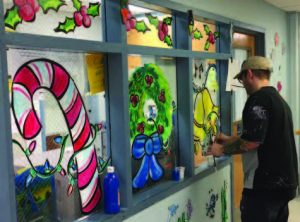
 ROOM TO GROW
ROOM TO GROW














 Fiberglass pools are pre-fabricated (kind of like giant bath tubs), trucked to your site and can be fully installed within three weeks. Their initial cost is about the same as concrete. In terms of having to be resurfaced, that’s not something you’ll ever have to worry about—you’ll be long dead before the liner wears out. There is a savings on chemicals, and also on accessories such as steps and ladders, because they are incorporated into the design. The issues that many people have with fiberglass pools include the meager selection of sizes and shapes, and the fact that they cannot be more than 16 feet wide, because of trucking limitations.
Fiberglass pools are pre-fabricated (kind of like giant bath tubs), trucked to your site and can be fully installed within three weeks. Their initial cost is about the same as concrete. In terms of having to be resurfaced, that’s not something you’ll ever have to worry about—you’ll be long dead before the liner wears out. There is a savings on chemicals, and also on accessories such as steps and ladders, because they are incorporated into the design. The issues that many people have with fiberglass pools include the meager selection of sizes and shapes, and the fact that they cannot be more than 16 feet wide, because of trucking limitations. If, after weighing the pros and cons of a diving board, you decide it’s right for you, then there are two basic types to consider. Jump boards offer varying degrees of flexibility and spring action, while dive boards are fixed and relatively stiff. Some people get them mixed up because their names kind of describe each other. Jump boards are what we used to call “springboards”—the ones that literally had visible springs coiled at the base. Today’s jump board assemblies look more like the curved leaf springs you see under a truck.
If, after weighing the pros and cons of a diving board, you decide it’s right for you, then there are two basic types to consider. Jump boards offer varying degrees of flexibility and spring action, while dive boards are fixed and relatively stiff. Some people get them mixed up because their names kind of describe each other. Jump boards are what we used to call “springboards”—the ones that literally had visible springs coiled at the base. Today’s jump board assemblies look more like the curved leaf springs you see under a truck. Not every property is suitable for every type of pool. Some of the conditions that can add significantly to the expense of an in-ground pool are loose, sandy soil or soil that contains numerous large rocks and boulders. Also, depending on where you live, it may be worth checking how the land was used before a house was constructed on it. Someone is living on top of the 1890 town dump, right? Is it you? A surprise like that could add $10,000 or more (a lot more, actually) to the price tag of pool construction. Professional soil testing is a smart first step.
Not every property is suitable for every type of pool. Some of the conditions that can add significantly to the expense of an in-ground pool are loose, sandy soil or soil that contains numerous large rocks and boulders. Also, depending on where you live, it may be worth checking how the land was used before a house was constructed on it. Someone is living on top of the 1890 town dump, right? Is it you? A surprise like that could add $10,000 or more (a lot more, actually) to the price tag of pool construction. Professional soil testing is a smart first step.

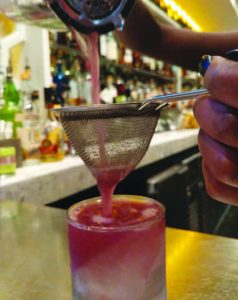 craft cocktail list sporting drinks named to prompt smiles and even giggles. Lavender Holyfield? Laird’s Gin, St. Germaine, fresh lemon juice, and a simple syrup scented with blueberries and lavender. Fallen Angel stars Angel’s Envy and a supporting cast of cold-weather add-ins. You can get a Who Killed Roger Rabbit, with Bulleit Bourbon, carrot juice, ginger beer and a bolt of thyme-infused simple syrup, or down Brunch on the Lower East Side without missing a trend: house-made bacon-infused bourbon, Knob Creek Smoked Maple Bourbon, vermouth and orange bitters. Catch the scene? You are supposed to have fun here.
craft cocktail list sporting drinks named to prompt smiles and even giggles. Lavender Holyfield? Laird’s Gin, St. Germaine, fresh lemon juice, and a simple syrup scented with blueberries and lavender. Fallen Angel stars Angel’s Envy and a supporting cast of cold-weather add-ins. You can get a Who Killed Roger Rabbit, with Bulleit Bourbon, carrot juice, ginger beer and a bolt of thyme-infused simple syrup, or down Brunch on the Lower East Side without missing a trend: house-made bacon-infused bourbon, Knob Creek Smoked Maple Bourbon, vermouth and orange bitters. Catch the scene? You are supposed to have fun here. yogurt that gave Middle Eastern nuance to the lamb, mint, and cranberries that offered throwback accenting tastes, and shavings of zucchini that provided a kind of palate cleanse between the variously spiced bites. Good stuff.
yogurt that gave Middle Eastern nuance to the lamb, mint, and cranberries that offered throwback accenting tastes, and shavings of zucchini that provided a kind of palate cleanse between the variously spiced bites. Good stuff. It should, if the Bacon Bolognese continues on the menu. It’s a kind of make-it-yourself carbonara, with a perfectly poached egg sitting atop peppery cavatelli tossed with applewood smoked bacon, tomato, and mozzarella. Prick the egg, let it run into the rest, toss (and toss some more), and you have a pasta dish for the ages. We liked it far better than the bland shrimp and grits, which had little presence of either the billed smoked cheddar or the lemon-garlic butter. Roasted Scottish salmon is the better choice in seafood, with a hot-sour broth fueled by tamarind and a stir-fry of tannic spinach that provided a counterpoint to the rich fish. A nightly special of steak tips plied with lemongrass didn’t make the point of why the beef needed that particular accent; it’s a dish that needs work. But Texas barbecue-style brisket? Sure thing. Belly up to that plate, complete with a Thanksgiving-ready creamy green bean-corn casserole and a splay of long-simmered onions.
It should, if the Bacon Bolognese continues on the menu. It’s a kind of make-it-yourself carbonara, with a perfectly poached egg sitting atop peppery cavatelli tossed with applewood smoked bacon, tomato, and mozzarella. Prick the egg, let it run into the rest, toss (and toss some more), and you have a pasta dish for the ages. We liked it far better than the bland shrimp and grits, which had little presence of either the billed smoked cheddar or the lemon-garlic butter. Roasted Scottish salmon is the better choice in seafood, with a hot-sour broth fueled by tamarind and a stir-fry of tannic spinach that provided a counterpoint to the rich fish. A nightly special of steak tips plied with lemongrass didn’t make the point of why the beef needed that particular accent; it’s a dish that needs work. But Texas barbecue-style brisket? Sure thing. Belly up to that plate, complete with a Thanksgiving-ready creamy green bean-corn casserole and a splay of long-simmered onions. INC has a multi-page whiskey menu that is presented at the start of a meal. The time it could take to digest this whiskey bill of fare might prevent you from actually dining, but it is a major attraction for whiskey lovers. Take the Manager’s Reserve List: There’s Corsets, Whips and Whiskey, Elijah Craig Barrel Proof, and Noah’s Mill. You also can do whiskey flights: Where There’s Smoke There’s Islay Scotch, Rye Not? and In ‘Bond’ We Trust. It’s all in good fun.
INC has a multi-page whiskey menu that is presented at the start of a meal. The time it could take to digest this whiskey bill of fare might prevent you from actually dining, but it is a major attraction for whiskey lovers. Take the Manager’s Reserve List: There’s Corsets, Whips and Whiskey, Elijah Craig Barrel Proof, and Noah’s Mill. You also can do whiskey flights: Where There’s Smoke There’s Islay Scotch, Rye Not? and In ‘Bond’ We Trust. It’s all in good fun.










 KNOT A PROBLEM
KNOT A PROBLEM

 You can quibble with these numbers—they rise and fall depending on clinical criteria and also who’s doing the studies—but there is no arguing that depression has a crippling effect on almost every aspect of the pursuit of happiness in America. On one end of the spectrum, it may involve temporary sadness (aka “the blues”). On the other end, it can last indefinitely, profoundly diminishing quality of life to the point of complete dysfunction. According to the Anxiety and Depression Association of America, depression is the leading cause of disability worldwide. People with depression may also suffer from anxiety disorders, which are different, but share similar symptoms—including insomnia, the inability to concentrate, nervousness, and irritability.
You can quibble with these numbers—they rise and fall depending on clinical criteria and also who’s doing the studies—but there is no arguing that depression has a crippling effect on almost every aspect of the pursuit of happiness in America. On one end of the spectrum, it may involve temporary sadness (aka “the blues”). On the other end, it can last indefinitely, profoundly diminishing quality of life to the point of complete dysfunction. According to the Anxiety and Depression Association of America, depression is the leading cause of disability worldwide. People with depression may also suffer from anxiety disorders, which are different, but share similar symptoms—including insomnia, the inability to concentrate, nervousness, and irritability.  The good news is that doctors have an ever-growing arsenal of pharmaceutical solutions. These medications have changed the game for millions of sufferers. The not so- good news is that a high percentage of individuals—as many as half of the 15 million people experiencing depression—either cannot tolerate or do not respond to these drugs.
The good news is that doctors have an ever-growing arsenal of pharmaceutical solutions. These medications have changed the game for millions of sufferers. The not so- good news is that a high percentage of individuals—as many as half of the 15 million people experiencing depression—either cannot tolerate or do not respond to these drugs. Elizabeth-based Medical Center assumes ownership of Bayonne Community Mental Health Center The healthcare world is in a rapid state of transformation where new opportunities often arise to elevate the level of care. Such an opportunity presented itself in 2017, when the Board of Trustees of Bayonne Community Mental Health Center (CMHC) elected to have Trinitas Regional Medical Center assume ownership of the CMHC. “This transition to ownership by Trinitas promises to be as seamless as possible. There are no plans for any interruption or major changes in the name, services, personnel, hours, location or anything else that would impact the clientele or the community,” explained Joseph M. Kadian, Psy.D., President and CEO of the CMHC.
Elizabeth-based Medical Center assumes ownership of Bayonne Community Mental Health Center The healthcare world is in a rapid state of transformation where new opportunities often arise to elevate the level of care. Such an opportunity presented itself in 2017, when the Board of Trustees of Bayonne Community Mental Health Center (CMHC) elected to have Trinitas Regional Medical Center assume ownership of the CMHC. “This transition to ownership by Trinitas promises to be as seamless as possible. There are no plans for any interruption or major changes in the name, services, personnel, hours, location or anything else that would impact the clientele or the community,” explained Joseph M. Kadian, Psy.D., President and CEO of the CMHC.  The field of Electrophysiology (of which Transcranial Magnetic Stimulation is a part) is nothing new. In fact, it dates back centuries. Near the end of the 18th century, Luigi Galvani first performed the same experiment you probably did in high-school Biology: noting that the legs of a dead frog twitched when touch by an electrical current. Galvani’s name is still with us today (galvanization). Several decades later, another giant in the history of science, Michael Faraday, did groundbreaking work in electromagnetism and electrochemistry, which established the foundation for research on brain stimulation through electricity and magnetism. By the mid-1900s, electroconvulsive therapy was widely used to treat major depression and other forms of mental illness. The first use of magnetic fields on electric signaling in the brain began in the 1980s, primarily for diagnostic purposes. By the early 2000s, however, researchers started noting the therapeutic possibilities of TMS.
The field of Electrophysiology (of which Transcranial Magnetic Stimulation is a part) is nothing new. In fact, it dates back centuries. Near the end of the 18th century, Luigi Galvani first performed the same experiment you probably did in high-school Biology: noting that the legs of a dead frog twitched when touch by an electrical current. Galvani’s name is still with us today (galvanization). Several decades later, another giant in the history of science, Michael Faraday, did groundbreaking work in electromagnetism and electrochemistry, which established the foundation for research on brain stimulation through electricity and magnetism. By the mid-1900s, electroconvulsive therapy was widely used to treat major depression and other forms of mental illness. The first use of magnetic fields on electric signaling in the brain began in the 1980s, primarily for diagnostic purposes. By the early 2000s, however, researchers started noting the therapeutic possibilities of TMS.
 …you use DNA, DNR and DMV interchangeably.
…you use DNA, DNR and DMV interchangeably.
 …you have to spell-check MRI.
…you have to spell-check MRI.
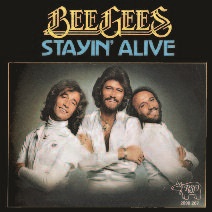
 …your advice to someone who broke their leg in
…your advice to someone who broke their leg in
 …you think Pepcid AC is a
…you think Pepcid AC is a

 A New Line in the Sand
A New Line in the Sand  Danger Alert for TV Binge Watchers
Danger Alert for TV Binge Watchers  Now Hear This
Now Hear This  Is Chocolate a “SAD” Solution?
Is Chocolate a “SAD” Solution?  Double Trouble
Double Trouble  Is That Cigarette Really Worth Seven Years?
Is That Cigarette Really Worth Seven Years? 
 The Thirsty Turtle • Tacos
The Thirsty Turtle • Tacos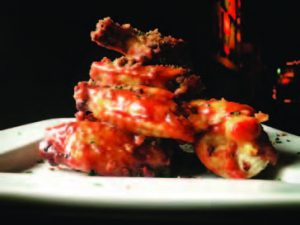 The Thirsty Turtle • Wings
The Thirsty Turtle • Wings The Famished Frog • Assorted Desserts
The Famished Frog • Assorted Desserts Arirang Hibachi Steakhouse • Sushi Tacos
Arirang Hibachi Steakhouse • Sushi Tacos Daimatsu • Sushi Pizza
Daimatsu • Sushi Pizza Luciano’s Ristorante & Lounge • Pan Seared Scallops
Luciano’s Ristorante & Lounge • Pan Seared Scallops Garden Grille • Cauliflower Steak
Garden Grille • Cauliflower Steak LongHorn Steakhouse • Outlaw Ribeye
LongHorn Steakhouse • Outlaw Ribeye Outback Steakhouse • Bone-In Natural Cut Ribeye
Outback Steakhouse • Bone-In Natural Cut Ribeye Arirang Hibachi Steakhouse • Volcano Roll
Arirang Hibachi Steakhouse • Volcano Roll Ursino Steakhouse & Tavern • House Carved 16oz New York Strip Steak
Ursino Steakhouse & Tavern • House Carved 16oz New York Strip Steak The Thirsty Turtle • Pretzel Burger
The Thirsty Turtle • Pretzel Burger The Thirsty Turtle • Irish Nachos
The Thirsty Turtle • Irish Nachos The Famished Frog • Assorted Flatbreads
The Famished Frog • Assorted Flatbreads Arirang Hibachi Steakhouse • Wasabi Crusted Filet Mignon
Arirang Hibachi Steakhouse • Wasabi Crusted Filet Mignon Daimatsu • Sushi Pizza
Daimatsu • Sushi Pizza Luciano’s Ristorante & Lounge • Warm Goat Cheese Salad
Luciano’s Ristorante & Lounge • Warm Goat Cheese Salad Garden Grille • Grilled Chicken Paillard
Garden Grille • Grilled Chicken Paillard LongHorn Steakhouse • Outlaw Ribeye
LongHorn Steakhouse • Outlaw Ribeye
 Arirang Hibachi Steakhouse • Volcano Roll
Arirang Hibachi Steakhouse • Volcano Roll Ursino Steakhouse & Tavern • House Carved 16oz New York Strip Steak
Ursino Steakhouse & Tavern • House Carved 16oz New York Strip Steak




 Born in Manhattan and raised on Long Island, David Levy has been a New Jersey resident for more than 30 years. Levy was an Optical (Op) artist at age 15—well before he established his hard-edge style of painting he dubbed Engineered Abstraction as a Fine Arts major at Lehigh University, where he also earned a master’s degree in Art History. For more on David Levy’s story, visit edgemagonline.com.
Born in Manhattan and raised on Long Island, David Levy has been a New Jersey resident for more than 30 years. Levy was an Optical (Op) artist at age 15—well before he established his hard-edge style of painting he dubbed Engineered Abstraction as a Fine Arts major at Lehigh University, where he also earned a master’s degree in Art History. For more on David Levy’s story, visit edgemagonline.com.










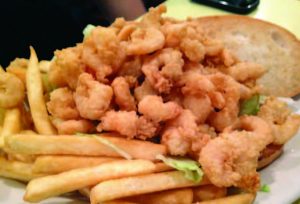



 They work where the girls are, the egg-layers, the turkeys, the broilers—those Cornish crosses that are the pasture-raised chickens sold under the Gladstone Valley Pasture Poultry label. A sibling enterprise to River Bend Farm, headquartered in Far Hills, Gladstone Valley chickens are the American equivalent to the Bresse chicken in France, the anointed “queen of poultry, poultry of kings.”
They work where the girls are, the egg-layers, the turkeys, the broilers—those Cornish crosses that are the pasture-raised chickens sold under the Gladstone Valley Pasture Poultry label. A sibling enterprise to River Bend Farm, headquartered in Far Hills, Gladstone Valley chickens are the American equivalent to the Bresse chicken in France, the anointed “queen of poultry, poultry of kings.” Professor in a doctoral program is more like it. Sal Pisani grew up under the tutelage of his father Rocco, who was born and reared in Calabria, Italy, but moved to the U.S. at 21, settling in Morris County. There, on threeacres, the Pisani family created their own Little Italy. “My father brought with him the traditions he picked up from his mother,” Sal says. “Dad would make cheese, cure meats. Every September, we’d make tomato sauce. It was all about food, when I was growing up, homesteading, not selling what we made.” There was a vegetable garden, animals – “chickens, goats, a horse, sheep, a peacock and an alpaca, but never more than 15 animals”—and the constant rhythm of time at the table with family and friends.
Professor in a doctoral program is more like it. Sal Pisani grew up under the tutelage of his father Rocco, who was born and reared in Calabria, Italy, but moved to the U.S. at 21, settling in Morris County. There, on threeacres, the Pisani family created their own Little Italy. “My father brought with him the traditions he picked up from his mother,” Sal says. “Dad would make cheese, cure meats. Every September, we’d make tomato sauce. It was all about food, when I was growing up, homesteading, not selling what we made.” There was a vegetable garden, animals – “chickens, goats, a horse, sheep, a peacock and an alpaca, but never more than 15 animals”—and the constant rhythm of time at the table with family and friends. “Our customers go insane over our carrots—they’re the sweetest carrots!” adds Stephanie. They grow in theground, in high tunnels, or hoop houses—plastic-covered structures that allow a plant’s roots to take in the nutrients of good soil, all the while being protected from storms and other excesses of the elements. Not that the couple wish to defy seasonality.
“Our customers go insane over our carrots—they’re the sweetest carrots!” adds Stephanie. They grow in theground, in high tunnels, or hoop houses—plastic-covered structures that allow a plant’s roots to take in the nutrients of good soil, all the while being protected from storms and other excesses of the elements. Not that the couple wish to defy seasonality. To work it all by the numbers: The Niederer family farm is about 80 acres, 40 of which are tillable and 25 of which—Chickadee Creek—Jess leases from her father. She employs nine people full-time, year-round, and is “trying to get every single one of them up to the $15-an-hour benchmark” well before state requirements kick in. Now in her 10th year running Chickadee Creek, she is 35 years old, has approximately 500 members in her CSA (Community Supported Agriculture) program. When we walk into one of her high tunnels, where gorgeous arugula is grown in the ground all winter, she’s quick to note a $14,000 tractor can work the soil of this 196-foot-by-30-foot structure. The number most on Jess Niederer’s mind, however, is $1 million—that’s the amount Jess needs to buy her farmland from her father. “It would be about $4 million if it wasn’t in the state preserved farmland program,” she says. That would not come with a house—just the land that Jess works to feed the thousands of people in New Jersey who love eating Chickadee produce.
To work it all by the numbers: The Niederer family farm is about 80 acres, 40 of which are tillable and 25 of which—Chickadee Creek—Jess leases from her father. She employs nine people full-time, year-round, and is “trying to get every single one of them up to the $15-an-hour benchmark” well before state requirements kick in. Now in her 10th year running Chickadee Creek, she is 35 years old, has approximately 500 members in her CSA (Community Supported Agriculture) program. When we walk into one of her high tunnels, where gorgeous arugula is grown in the ground all winter, she’s quick to note a $14,000 tractor can work the soil of this 196-foot-by-30-foot structure. The number most on Jess Niederer’s mind, however, is $1 million—that’s the amount Jess needs to buy her farmland from her father. “It would be about $4 million if it wasn’t in the state preserved farmland program,” she says. That would not come with a house—just the land that Jess works to feed the thousands of people in New Jersey who love eating Chickadee produce. Mishti Chocolates
Mishti Chocolates The Scotch Plains resident started making chocolates professionally when she and husband Puneet Girdhar realized their then-baby daughter Mishti had a variety of allergies, including dairy. “We have a healthy household,” says Arpita, a skilled home cook who had been making chocolates since she was a child. “So I started making vegan chocolates.” And it worked. Little Mishti, now 4½, could enjoy chocolates like her mom and dad. Arpita, creative by nature with a career in textiles, kept experimenting and perfecting the chocolate line she named Mishti. She uses 100 percent chocolate; her milk chocolate is made with almond milk and her sourcing meticulous. Her elegant packaging reflects the fundamental simplicity of her recipes and products.
The Scotch Plains resident started making chocolates professionally when she and husband Puneet Girdhar realized their then-baby daughter Mishti had a variety of allergies, including dairy. “We have a healthy household,” says Arpita, a skilled home cook who had been making chocolates since she was a child. “So I started making vegan chocolates.” And it worked. Little Mishti, now 4½, could enjoy chocolates like her mom and dad. Arpita, creative by nature with a career in textiles, kept experimenting and perfecting the chocolate line she named Mishti. She uses 100 percent chocolate; her milk chocolate is made with almond milk and her sourcing meticulous. Her elegant packaging reflects the fundamental simplicity of her recipes and products.